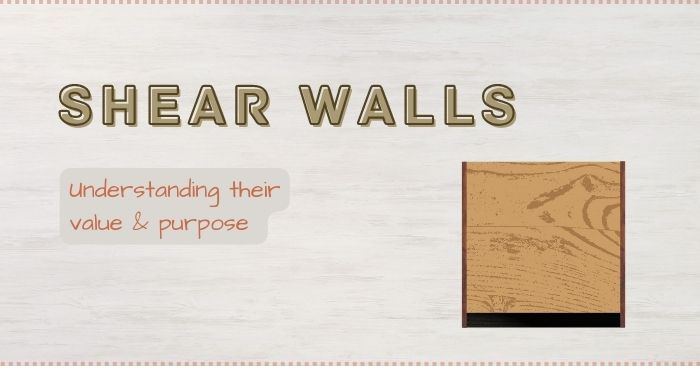
Shear walls are often seen in construction to bear heavy loads and withstand the forces of natural disasters. Understanding the purpose of shear walls and how they work can give you great insight into the building process and how it ties into safety.
A shear wall is an architectural design made to withstand high-impact winds and other forces parallel to the plane of the structure.
How it works is when one end of the wall undergoes an uplift, the other side is compressed - both loads alternate as the structure shakes to distribute the impact.
Shear wall construction is composed of two or more walls, with beams or slabs and columns connecting the beams. This type of framing provides resistance to lateral forces and lateral loads by bending and with movement.
APA rated sheathing and Structural I are some of the best plywood to use when building shear walls. Structural I must be dense Douglas Fir or Southern Pine wood, while rated plywood can be any wood species.
It’s best to avoid using 3-ply plywood, as the highest acceptable values were reduced by the city of Los Angeles to around 200 lbs/ft maximum. This change took place after the Northridge Earthquake tore architecture with this type of plywood - so regardless of where you stay, it’s best to use higher grade plywood.
When building a home with concrete shear walls, it is important to work closely with your contractor to ensure high-quality materials are used for optimal safety.

"Experience the DIFFERENCE!"
Pam is a top-ranking real estate broker with 40 years sales experience. Pam’s 30 years in real estate includes co-owning and operating Century 21 Carriage House (aka Century 21 Minuteman). Prior to selling real estate, Pam sold computers for the Hewlett-Packard Company. In addition to an MBA, Pam earned her Juris Doctor degree from Suffolk University Law School and is admitted to the Massachusetts Bar.
Pam offers her clients a level of expertise rarely found in real estate because of her background, education, and experience. She is now accepting new clients.